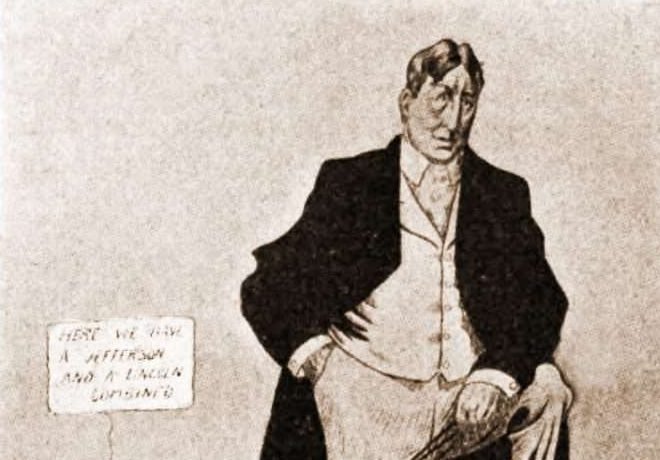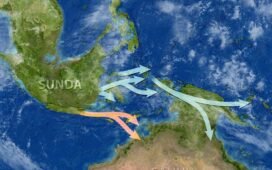
 Millionaire publisher William Randolph Hearst (1863-1951) did not make the short list of candidates which The Argus of Albany, recommended for the Democratic nomination for governor in 1906.
Millionaire publisher William Randolph Hearst (1863-1951) did not make the short list of candidates which The Argus of Albany, recommended for the Democratic nomination for governor in 1906.
The Argus, a Democratic-aligned newspaper, opposed Hearst because of his fusion strategy, seeking to run on multiple party lines.
“William Travers Jerome [1859-1934] would be an uncommonly available Democratic candidate for Governor this year,” The Argus editorialized on August 3rd.
Jerome, the New York County District Attorney, had a reputation for prosecuting corruption, going so far as the personally participate in raids of gambling houses.
“The peculiar conditions fit him and he fits them ‘like paper on the wall.’ He has a really remarkable gift of presenting live issues in a way which the papers like to print, and which the people like to hear,” The Argus editorialized. “Nominate William Travers Jerome and he will be elected.”
State Supreme Court Justice William J. Graynor (1849-1913), who later was New York City mayor, was another possibility, providing he was willing to reject a fusion strategy.
“Graynor… is an upright, just judge and a true Democrat… His integrity is beyond reproach,” The Argus editorialized. “He possesses, in addition, many qualifications particularly adapted to the present course in politics generally, and within the Democratic party.”
Another acceptable candidate came from the western part of the state.
“James M. Adam, mayor of Buffalo, is giving that much-misgoverned city an administration clean, high-toned, efficient – a reminder of the days of that earlier reform mayor of Buffalo, Grover Cleveland,” the Argus editorialized.
“Mayor Adam’s record-breaking run for the mayoralty last fall is an asset which the Democratic party and its managers cannot afford to overlook.”
The Argus questioned Hearst’s loyalty to the Democratic Party, given the newspaper publisher’s support from The Independence League, a new political party which Hearst organized in 1906 to provide Hearst with an additional ballot line in the general election.
The new party called for public ownership of utilities, election reform, and increased disclosure of political contributions.
“The two political machines of the state and the tools of corrupt corporation, and that the only recourse open to the people is to organize for themselves to fight the machines of both parties,” said Judge Samuel Seabury, explaining the reasons for organizing, in a speech at the party’s convention July 31 in New York City.
“No man can be both a Democrat and an Independence League man,” The Argus editorialized. “He may honestly and consistently belong to any party he believes in, but not to two parties at once.”
On the Republican side, party faithful were still waiting for Gov. Frank Higgins (1856-1907) to announce whether he would seek a second term.
“A gentleman close to Governor Higgins says that the Governor expects to be renominated, as things now stand, but as for making a definite announcement, ‘that isn’t his way,’” The Argus reported on July 30. “Besides, he likes in politics, as well as he did in business, to leave an option for himself to get out of a bad deal before it is too late.”
Charles Evans Hughes, the eventual GOP nominee, was still considered an unlikely candidate, though some were booming the Glens Falls native’s name.
“’The people who are talking of Charles E. Hughes for Governor appear,’ to the long-rage vision of the Waterbury American (of Connecticut), ‘to be those who want anybody but Higgins.’ Distance lends clear vision as well as disenchantment.”
Campaign news continued to focus on the evasiveness of Higgins.
“Governor Higgins is succeeding with difficulty, if mystification is his notion of statesmanship and politics. He is the cause of a guessing-match conducted by little and big Republicans alike, and it must be said that their guesses are not flattering to the governor,” The Argus reported on August 1st.
“It all arises from the apparent desire to hold the gubernatorial field by a sort of squatter sovereignty, keeping other ambitious Republicans from announcing themselves as candidates.”
The Democratic and Independence League parties did, in fact, put forward a fusion ticket which won every office except governor in the general election.
Hughes won the governor’s race and went on to a lengthy public service career that included running for President in 1916 and serving as U.S. Secretary of State in the Harding and Coolidge administrations and as Chief Justice of the United States.
The Independence League, also known as the Independence Party, achieved a second-place finish in Massachusetts during the election there for governor in 1907, prompting them to organize for the 1908 presidential election.
After receiving only 83,000 votes nationwide in 1908 however, the party dissolved nationally, although it continued in New York State until the state election of 1914.
Read more New York State political history.
Illustration: William Randolph Hearst of the Independence Party, an organization represented as his fawning puppet in this cartoon from ca. 1907.









Recent Comments